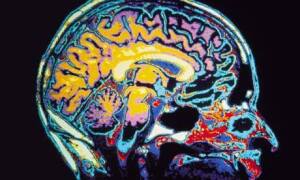by
Brendon Nafziger, DOTmed News Associate Editor | June 17, 2011
Fewer than half of Canadian patients showing up to a hospital with early stroke symptoms receive a CT or MRI scan within an hour of arrival, as recommended by doctors, according to a new study on stroke treatment in Canada.
The study, "The Quality of Stroke Care in Canada," was released Thursday by the Canadian Stroke Network.
Patients must arrive at the hospital within 3 to 4.5 hours of ischemic stroke symptom onset for treatment to reduce brain damage. But the study found the median arrival time was seven hours after symptom onset. Only one-third of patients showed up before 3.5 hours, the study said.



Ad Statistics
Times Displayed: 186558
Times Visited: 4970 For those who need to move fast and expand clinical capabilities -- and would love new equipment -- the uCT 550 Advance offers a new fully configured 80-slice CT in up to 2 weeks with routine maintenance and parts and Software Upgrades for Life™ included.
Even so, of the more than 13,000 patients in the study who arrived within 3.5 hours of symptom onset, only 40 percent received an MRI or CT brain scan within an hour of arrival. Overall, about one-fifth of patients received a brain scan within 60 minutes, the study said.
The brain scans are used to help determine the type of stroke and to see if patients would benefit from a clot-busting drug, recombinant tissue plasminogen activator, or tPA. It must be given within 3 to 4.5 hours to be effective, and only helps patients with ischemic strokes.
In the study, 12 percent of ischemic stroke patients admitted to a hospital capable of delivering tPA received the drug. Overall, of the 34 percent of ischemic stroke patients who show up at a hospital within 3.5 hours of symptom onset, 22 percent received tPA.
Around 30 percent of ischemic stroke patients were admitted to a hospital that doesn't provide tPA. The median "door-to-needle" time - that is, from admission to getting tPA - was 72 minutes, according to the study.
Other findings include:
• Telemedicine for stroke treatment is underused, with only one percent of stroke patients having access to it.
• Only 23 percent of patients are treated at a stroke unit.
"The study's findings and recommendations are a 'call to action' to the Canadian stroke care community," said Dr. Moira Kapral, a national steering committee member and associate professor of medicine with the University of Toronto, in a statement.
The authors said that improving stroke care in Canada could save $36.1 billion (Canadian dollars) in direct and indirect costs from 2010 until 2031.
The study reflects data collected from more than 38,000 stroke patients at 295 hospitals between 2008 and 2009.

